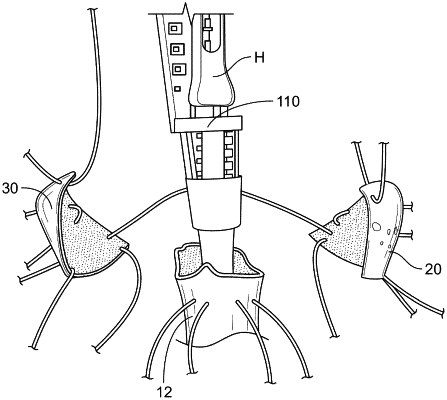| CPC A61F 2/4003 (2013.01) [A61F 2/30771 (2013.01); A61F 2/30942 (2013.01); A61F 2/4675 (2013.01); A61B 17/72 (2013.01); A61F 2002/4007 (2013.01); A61F 2002/4632 (2013.01); A61F 2310/00359 (2013.01)] | 19 Claims |

|
1. A method of repairing a fractured bone having at least a first bone segment and a second bone segment, the method comprising:
implanting a prosthetic stem into an intramedullary canal of the fractured bone, the prosthetic stem having a first end with a first surface portion and a second surface portion;
robotically machining the first bone segment of the fractured bone to include a first implant-facing surface that is substantially a negative of the first surface portion of the first end of the prosthetic stem;
robotically machining the second bone segment of the fractured bone to include a second implant-facing surface that is substantially a negative of the second surface portion of the first end of the prosthetic stem;
robotically machining the first bone segment and the second bone segment so that the first bone segment has a first interlocking surface and the second bone segment has a second interlocking surface shaped to interlock with the first interlocking surface; and
positioning the first bone segment and the second bone segment with respect to the first end of the prosthetic stem so that (i) the first implant-facing surface is in contact with the first surface portion of the first end of the prosthetic stem, (ii) the second implant-facing surface is in contact with the second surface portion of the first end of the prosthetic stem, and (iii) the first interlocking surface interlocks with the second interlocking surface.
|